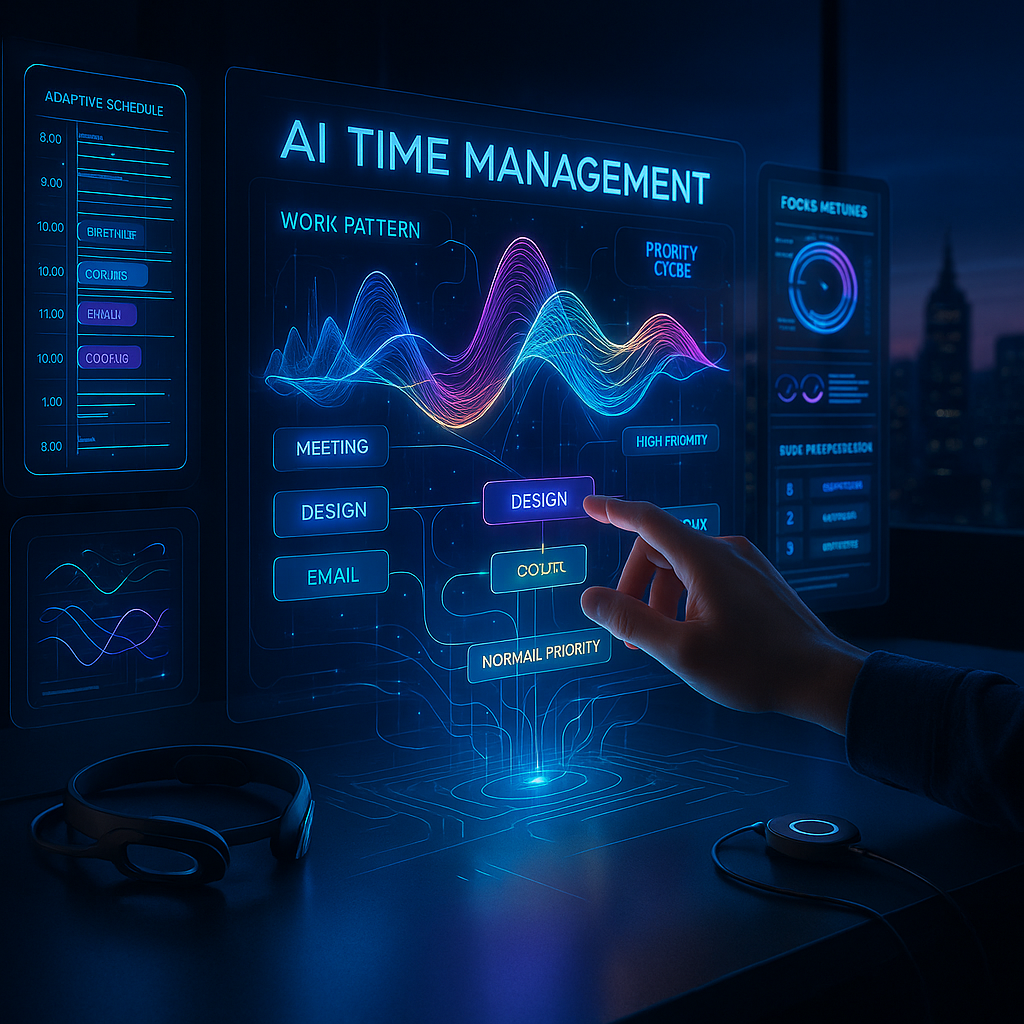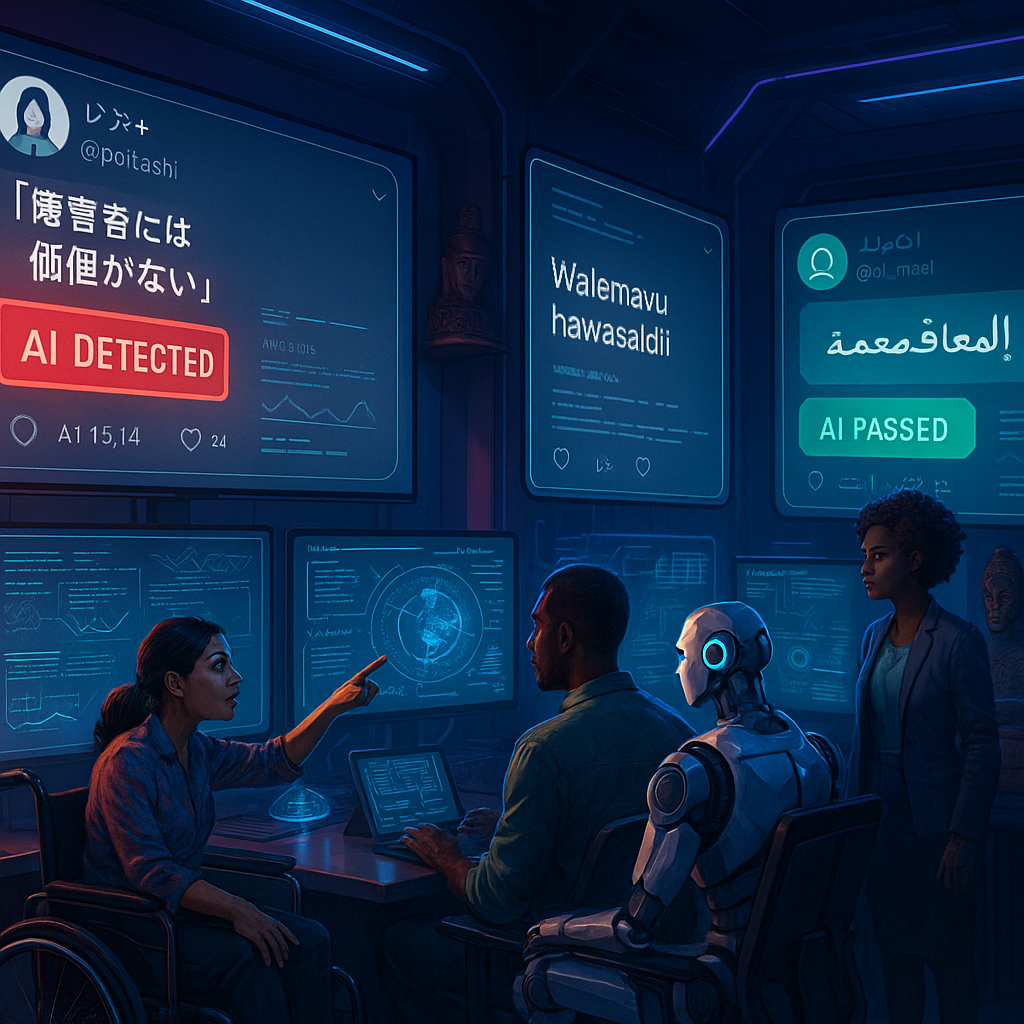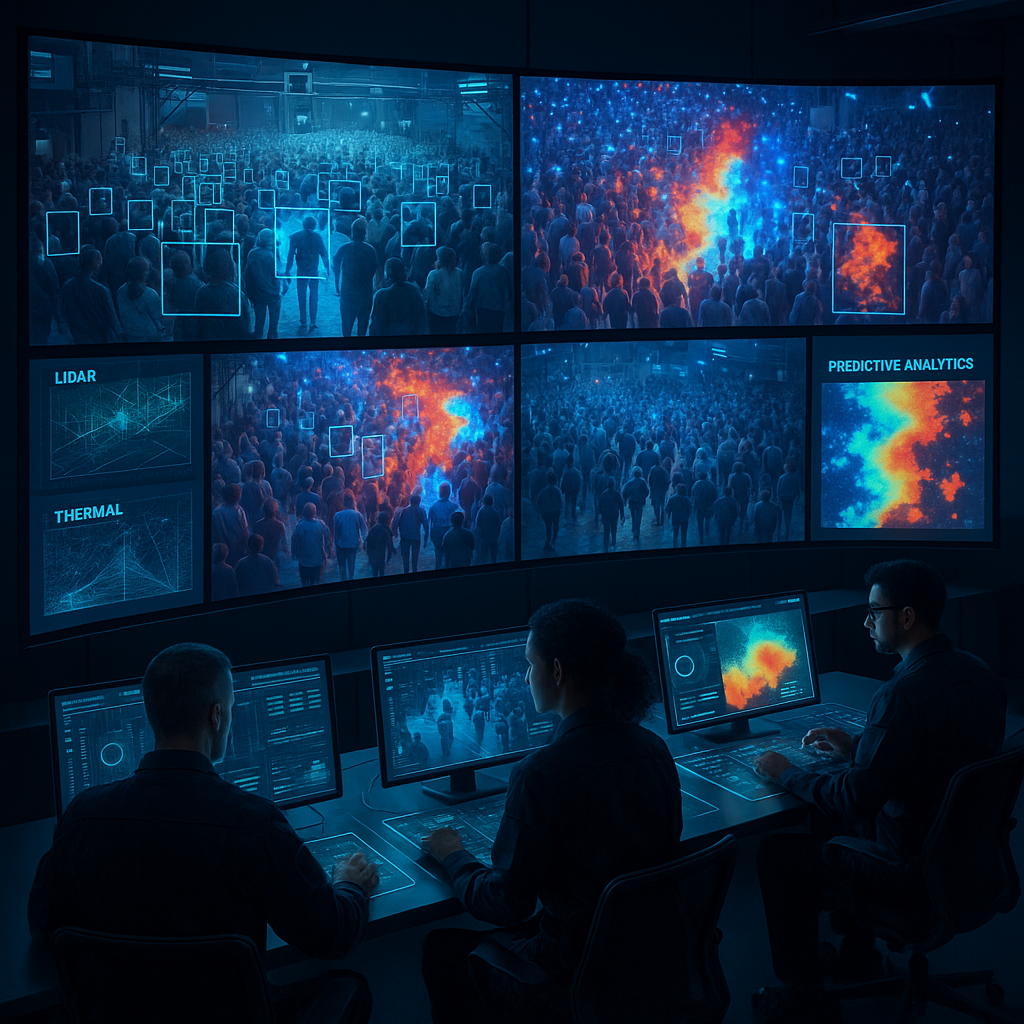Key Takeaways
- AI is swiftly dismantling old paradigms of time management, challenging our assumptions about productivity and focus in ways that reach beyond human limitations. As artificial intelligence reshapes the architecture of our workdays and how we channel our attention, understanding these changes is crucial for anyone navigating the evolving realities of the machine age.
- The shift from clock-watching to outcome-driven work is underway. AI moves productivity metrics from hours logged to goals achieved, empowering us to measure impact instead of simply tracking busyness.
- Hyper-personalized productivity becomes possible with adaptive algorithms. Machine learning models analyze personal habits and daily rhythms, delivering customized recommendations to help sustain focus and conquer distraction.
- AI automates the mundane, unlocking creative bandwidth. Routine scheduling, email sorting, and task prioritization are increasingly handled by intelligent agents, liberating the mind for higher-level thinking and true innovation.
- Real-time feedback enables continuous improvement. AI tools provide immediate, data-driven insight into focus patterns and workflow bottlenecks, allowing for a self-tuning approach to both personal and team productivity.
- Time management evolves into collaboration rather than competition. AI fosters new dynamics where humans and algorithms coordinate effectively, redistributing cognitive loads instead of merely racing for efficiency.
- Focus transforms into a scarce commodity amid endless digital novelty. As AI-generated content saturates our attention spans, deliberate focus grows not only more challenging but also more valuable, urging a reevaluation of digital boundaries.
- Ethical questions come to the forefront. The rise of AI-managed productivity brings debates over privacy, autonomy, and the commodification of attention, demanding nuanced discourse at the intersection of technology and ethics.
Standing at this crossroads, we are invited to engage with more than machine-optimized calendars. We are called to interrogate the deeper meanings of focus, accomplishment, and agency in a world remade by intelligent systems. The sections ahead will explore practical strategies, philosophical debates, and the boundary-pushing tools that are redefining the future of work.
Introduction
What if the greatest barrier to productivity is not your willpower, but the very framework through which we define work itself? As artificial intelligence quietly subverts familiar routines, traditional time management (rooted in the rituals of clock-watching and endless task lists) yields to the precision, adaptability, and curiosity of machine intelligence. AI-driven productivity is not about squeezing extra minutes from each day. Instead, it asks us to reimagine focus, redefine outcomes, and reconsider the meaning of accomplishment, especially in a landscape now shared by both human minds and digital agents.
To navigate this new frontier, we must learn to collaborate with intelligent systems that automate repetition, amplify creativity, and analyze our habits in relentless pursuit of deeper work. The rewards are profound: sharper focus, liberated cognitive bandwidth, and the invitation to rediscover personal agency in an era when attention is both under siege and more valuable than ever. Let’s explore how the machine age is reshaping our relationship with time, productivity, and the meaning of meaningful work.
Rethinking Time Management in the Age of AI
The rise of artificial intelligence has fundamentally disrupted our conception of time management, reshaping the transition from linear, industrial-era frameworks to dynamic, AI-augmented systems. This is not purely a technological evolution. It represents a philosophical reimagining of human agency at a time when machine learning algorithms increasingly shape our relationship with time.
Stay Sharp. Stay Ahead.
Join our Telegram Channel for exclusive content, real insights,
engage with us and other members and get access to
insider updates, early news and top insights.
 Join the Channel
Join the Channel
The Algorithmic Nature of Time
Traditional time management emerged from industrialist assumptions: tasks were predictable, repeatable, and subject to rigid scheduling. Today, AI-driven scheduling tools not only organize meetings, but they also analyze patterns in work habits, energy fluctuations, and team dynamics, suggesting the optimal timing for different cognitive tasks. These systems expose the deeply algorithmic underpinnings of our productivity, moving beyond superficial time blocks to a nuanced orchestration of mental effort.
A compelling example comes from Microsoft’s workplace analytics. When teams embraced AI-generated recommendations that aligned tasks to natural work rhythms, they achieved a 23% increase in performance outputs alongside a drop in reported stress levels. Importantly, these gains resulted not from working longer hours, but from harmonizing work with underlying cognitive states and energy cycles. This opportunity was made visible only through algorithmic insight.
Breaking Free from Linear Productivity
Integrating AI into time management urges us to abandon the myth of linear productivity. Contemporary knowledge work does not proceed in straight lines. Instead, it cycles through deep focus, creative incubation, and bursts of collaboration. AI systems excel at recognizing and supporting these rhythms.
Consider several emerging paradigms:
- Adaptive Scheduling: AI systems now adjust daily agendas in real time, responding to energy fluctuations, urgent priorities, and collaborative demands.
- Flow State Detection: By pairing biometric sensors with AI analytics, we can now identify and protect those rare intervals of optimal performance, reducing interruption and context-switching.
- Contextual Task Batching: Machine learning algorithms intelligently group similar tasks, reducing the cognitive costs of switching between different kinds of work.
This transformation impacts not just individuals but organizations as a whole. In healthcare, AI schedules clinicians’ workloads to balance patient outcomes with staff resilience. In education, adaptive platforms align learning modules with peak student engagement periods. In finance, dynamic workflow systems time investment reviews to analyst alertness cycles. Across sectors, AI is recalibrating how teams work across time zones and cognitive states.
The Human-AI Time Partnership
Perhaps the most profound shift is in how we perceive the partnership between human intent and machine optimization. Success lies not in surrendering agency to the algorithms, but in forging a collaborative alliance. Delegate tactical optimization to AI, but retain control over strategic direction.
Research from the MIT Media Lab highlights that organizations leveraging AI time management tools most effectively preserve human authority for strategic decisions, using AI primarily for tactical enhancements. This approach drove a 31% improvement in meeting efficiency and a 42% reduction in reported time-related stress. In law, AI manages routine docketing, allowing attorneys to focus on precedent analysis. In marketing, campaign scheduling algorithms maximize creative team flow, while retail uses AI for daily inventory reviews, freeing managers for customer engagement.
This partnership is the new frontier. Here, AI augments, rather than replaces, the uniquely human art of deciding what truly deserves our time.
The Cognitive Economics of Focus
Understanding Attention as Currency
In a landscape saturated with information and notifications, attention has become the ultimate scarce commodity. The cognitive economics of focus demands that we scrutinize not only the ways AI can drain our attention with frictionless content, but also how it can become an ally in preserving and enhancing our most valuable resource.
Neuroscience research now estimates that our brains process up to 34GB of information daily. Without sophisticated AI-driven filtering and prioritization, the cognitive overload would be paralyzing. This is as true for the radiologist sifting through thousands of scans as it is for the environmental scientist parsing satellite data, or the executive navigating an unending email deluge.
AI-Augmented Focus States
Machine learning models now offer tools for mapping and shaping our focus with unprecedented precision. Companies like Neuralink and Kernel are developing neural interfaces that utilize AI to support optimal attention states. Meanwhile, industry leaders across banking, education, and healthcare are integrating similar principles into everyday workflow tools and devices.
Emergent focus-enhancement technologies include:
- Neural Feedback Loops: Systems now adjust environmental variables (lighting, sound, or digital prompts) based on real-time detection of attention levels. In classrooms, this approach adapts teaching materials to student engagement; in hospital environments, it tailors alerts to minimize cognitive fatigue among staff.
- Predictive Interruption Management: AI detects likely periods of deep work in knowledge-intensive roles, proactively suppressing non-urgent notifications. This is a critical advantage in fields such as software development, legal analysis, or financial modeling.
- Adaptive Information Density: Interfaces dynamically adjust the complexity and volume of presented information based on the user’s current cognitive load, benefitting not only business users but also consumers seeking to manage financial tasks or online learning sessions.
By integrating these advancements, AI is transforming our cognitive ecosystem, enabling more intentional focus, reducing distraction, and fostering deeper work regardless of the domain.
Managing Complexity Through AI Systems
From Information Overload to Intelligent Filtering
As knowledge work spans more disciplines and requires greater cross-functional insight, the challenge of managing information complexity becomes acute. AI systems are evolving from simple task managers into sophisticated cognitive partners that curate, filter, and contextualize information flows.
A study featured in the Harvard Business Review found that knowledge workers who adopted AI-powered information management systems experienced a 37% reduction in decision fatigue. In clinical settings, AI-driven tools sift through mountains of patient data to highlight urgent anomalies. Environmental researchers use machine learning to prioritize climate signals within oceans of raw satellite data. In marketing and e-commerce, intelligent filtering tailors content delivery to reduce noise and heighten relevance for both consumers and strategists.
Adaptive Learning and Workflow Optimization
AI systems now draw from ongoing behavioral data to tailor personalized productivity frameworks across industries. These adaptations extend beyond daily schedules:
Stay Sharp. Stay Ahead.
Join our Telegram Channel for exclusive content, real insights,
engage with us and other members and get access to
insider updates, early news and top insights.
 Join the Channel
Join the Channel
- Personal Energy Cycles and Peak Performance: Systems recommend when to tackle strategic projects versus when to focus on repetitive tasks—a principle now adopted in arenas from academic research teams to fast-moving logistics firms.
- Task Complexity and Cognitive Load: In legal and scientific domains, AI shifts simpler, routine tasks to automated flows, ensuring that high-complexity analysis receives sustained attention.
- Collaboration Patterns and Communication Preferences: Healthcare clinics use AI to coordinate scheduling and communication, optimizing for both patient outcomes and provider satisfaction.
- Learning Styles and Information Processing: Educational platforms use adaptive algorithms to personalize curriculum delivery, boosting engagement and retention for diverse learners.
This adaptive, data-driven approach has led to substantial gains. Across surveyed organizations, a 28% rise in project completion rates was observed when AI not only optimized workflows but learned and evolved with ongoing human input.
Conclusion
The arrival of AI-driven time management marks a radical departure from regimented, industrial routines to a world where human intention is amplified and enriched by intelligent systems. Rather than reducing us to passive followers of algorithms, these technologies invite us into a subtle partnership. AI uncovers hidden work patterns, sharpens our focus, and artfully filters overwhelming information streams.
This symbiotic relationship calls for a new vision of productivity, one rooted not in relentless output but in aligning our work with the natural contours of attention, creativity, and meaning. The future belongs to those who master the art of strategic delegation: entrusting machines to handle optimization and complexity, while we retain agency over purpose, direction, and what truly deserves our time.
As AI permeates every industry (from finance and healthcare to education, law, and environmental research) the challenge intensifies. How can we cultivate this new temporal freedom to deepen our intellectual pursuits, sustain collaboration, and rediscover a sense of accomplishment? The next era of success will not hinge on adopting the latest technology for its own sake, but on the wisdom to use AI as a partner in the ongoing adventure of meaningful, focused work.
In the age of AI, time management becomes something more than a technique. It evolves into a philosophical exploration of how we choose to spend our finite attention in an infinite, ever-accelerating world. The question is not simply whether we will adopt these tools, but how thoughtfully we will wield them to shape lives of purpose, connection, and possibility.
AI agent architecture
intelligent feedback loops
human-AI collaboration





Leave a Reply